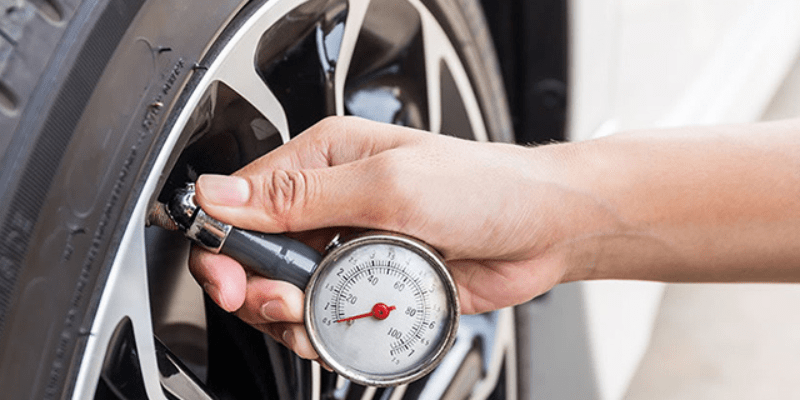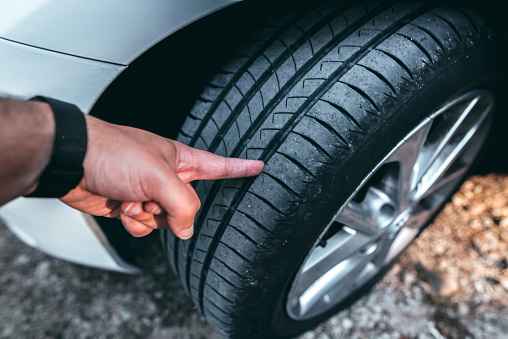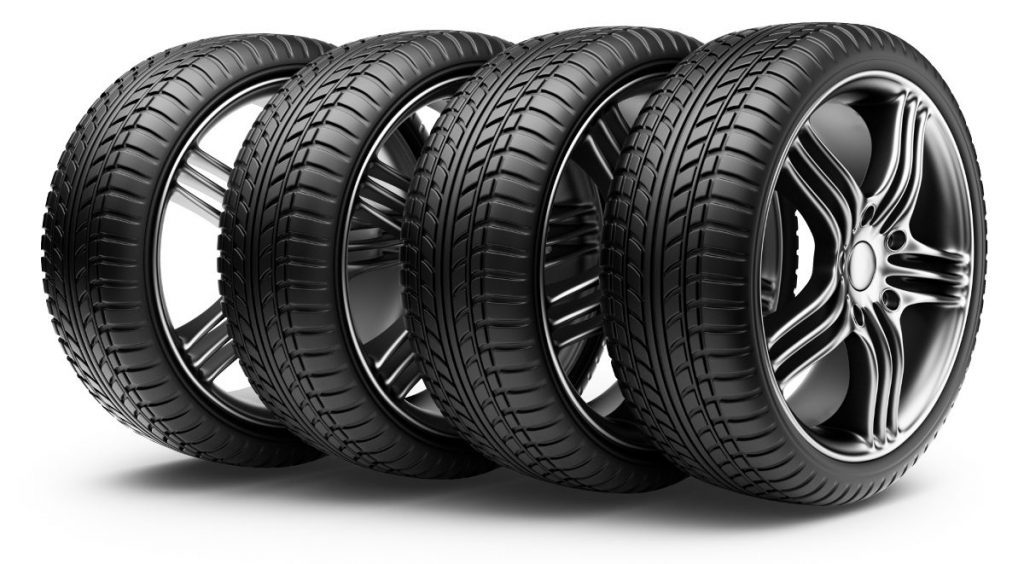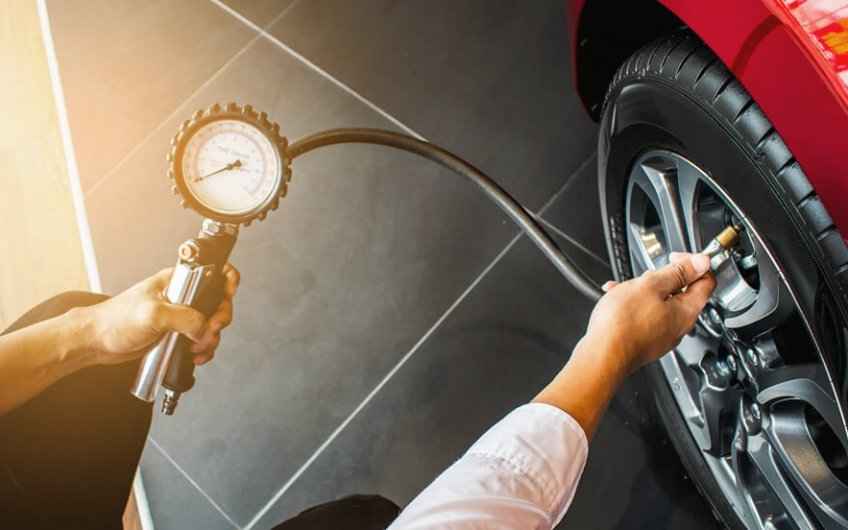Driving on a tire that is underinflated can cause them to wear down more quickly, and even blow out. Inflating your tires to the correct pressure is important not only for your safety but for the longevity of your tires as well. Your car’s tire also can affect your fuel average and your vehicle’s road grip, so always maintain your car’s tire air pressure.
We will discuss tire air pressure in this article. You should read it completely and also share it with your friends for their safety and vehicle safety.
Air Should You Put In Your Car Tires
Do you ever get the feeling that your car’s tires are about to blow? If so, it might be time to check the pressure in your tires. According to the Car Care Council, a properly inflated tire will have a reading of 30 psi.
Here’s how to figure out how much air to put in your tires:
1. Check the inflation level of your car’s air pump. Most cars come with an air pump that reads just under 30 psi.
2. Use a tire pressure gauge to measure the pressure in each tire. Add up the pressures and divide by two (30 psi) to get the correct amount of air to put into each tire.
3. Open all of your car’s doors and let the air out of each tire. Then, reinflate each tire using your air pump to the correct pressure (30 psi for most cars).
4. Close all of your car’s doors and drive around a few times to make sure everything is okay.
Recommended Tire Pressure For Car
Every car is different, so it’s important to check your owner’s manual or consult a mechanic to find the appropriate pressure for your tires. For most passenger cars and light trucks, you should use at least the manufacturer’s recommended tire pressure.
However, there are a few exceptions. If your vehicle has a “speed rating” of 90 or higher, you should use the maximum pressure allowed by the tire manufacturer. And if you’re driving in snow or on ice, you should use even more pressure than usual.
Here are some general guidelines for choosing the correct tire pressure:
- Tires with a lower inflation pressure (12 psi or less) wear more slowly and have the better fuel economy.
- Tires with a higher inflation pressure (15 to 24 psi) provide better traction in wet and icy conditions, but they also wear faster.
- Use the lowest inflation pressure that provides adequate traction in your driving conditions.
Maintain Proper Tire Inflation
It is important to maintain proper tire inflation in order to ensure a safe ride and reduce wear and tear on your vehicle. The recommended air pressure for your car tires is listed on the side of the tire. To determine how much air to put in your tires, use the following formula: PSI x 0.6 = Inch of Air Needed.
So, if your PSI is 120, you would need to add 12 inches of air to the tire. Over-inflating your tires can cause them to become unstable and dangerous, so be sure to check your tire pressure regularly and adjust it as needed.
Temperature Affects Tire Pressure
The National Highway Traffic Safety Administration (NHTSA) recommends that drivers adjust their tire pressure according to the ambient temperature. This is because tires work best when they are slightly below the atmospheric pressure.
In general, tires should be inflated to the manufacturer’s recommended PSI range for your driving conditions and vehicle weight. However, when temperatures are high, it may be necessary to inflate tires to a higher PSI level in order to provide better grip and prevent sidewall blistering.
Correct Way to Check Tire Pressure
It’s important to keep your car’s tires inflated to the proper pressure, as underinflation can lead to unsafe driving conditions, and overinflation can cause your tires to wear prematurely. Here are four ways to check your tire pressure:
- Inflate your tires using a standard household compressor
- Use a digital tire pressure gauge
- Inspect your car’s manual inflation pressure setting
- Check your car’s air pressure at a service station or gas station
How to Use a Gauge to Check Tire Pressure
If you’re like most drivers, you probably don’t bother checking your tire pressure regularly. But checking your tires can help prevent costly repairs and also save you time. Here’s how to do it:
1. Park your car on a level surface with the front end at least 2 feet from any object.
2. Remove the air pressure gauge from its packaging and insert it into one of the tire valves.
3. Turn the wheel so that the gauge reads 0 psi (or whatever the recommended pressure is for your tire).
4. Replace the air pressure gauge and screw the valve cover back on.
5. Drive your car until it starts to feel uncomfortable, then check your tires again to make sure they’re still at the correct pressure.
How Does Tire Pressure Affect Driving
When you drive your car, you are essentially pushing air against the ground. This air is transferred to the wheel through the tires. The pressure of this air affects how well the wheel can rotate and how effectively the car can move.
The pressure of the air in your tires is measured in pounds per square inch (PSI). Most cars have a recommended tire pressure that you should maintain. The National Highway Traffic Safety Administration (NHTSA) has a recommended psi for each type of tire. A good way to remember this is that a tire with a rating of “75” should be inflated to about 12 PSI, and a tire with a rating of “100” should be inflated to about 15 PSI.
Low tire pressure can cause your car to pull to one side or lose traction on the road. High tire pressure can cause your tires to overheat and even blow out. It’s important to check your vehicle’s owner’s manual or consult a qualified technician to see what psi your tires are rated at and what inflation pressures are safe for your driving conditions.
Tire pressure affects fuel economy
Tire pressure affects fuel economy in a number of ways. For starters, a lower tire pressure means less air resistance when the car is travelling through the air. This means that the car will have to work harder to move through the air, which in turn uses more fuel. Additionally, low tire pressure can cause uneven wear on the car’s suspension and tires, both of which can lead to decreased fuel economy. So, it’s important to keep your tire pressure at the manufacturer’s recommended level.
When to Replace Car Tires
How much air should you put in your car tires? This is a question that many drivers ask themselves, but don’t know the answer to. While it can be tempting to just let the tires go until they are completely flat, this is not the best solution. In fact, you could be putting your safety and the safety of others at risk. Here are four reasons why you should always replace your car tires when they are low on air:
1. Your car will not be able to drive as far. When the air pressure in your tires is low, it can cause them to wear faster and become less effective. This means that you will have to drive further to get where you are going and this could lead to problems.
2. You could lose control of your car. If the air pressure in your tires is low, it can cause them to become unstable and give you less control over the vehicle. This could lead to a crash, which would be really inconvenient and dangerous.
3. Your car will be more likely to spin out. When the air pressure in your tires is low, it can cause them to lose their balance.
Conclusion
When it comes to your car tires, you want to make sure that you are giving them the proper amount of air. Overinflating your tires can cause them to tear and eventually blow out, which can be dangerous not just for you but also for other drivers on the road. Follow these tips to ensure that your car tires get the air they need and stay safe on the road.



